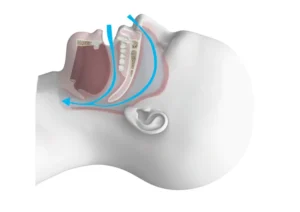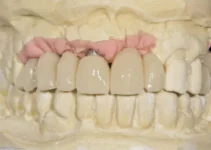Dyspnoea, commonly known as shortness of breath, can be a distressing experience, affecting millions of people worldwide. This condition not only involves the uncomfortable sensation of being unable to breathe adequately but also encompasses a wide range of underlying causes ranging from mild to severe. Understanding dyspnoea means recognizing its symptoms, which may include rapid breathing, tightness in the chest, and excessive fatigue. It’s important to identify the triggers and potential health issues linked with dyspnoea, as timely diagnosis and proper management can significantly improve quality of life.
Understanding Dyspnoea
In the field of respiratory medicine, dyspnoea is one of the most commonly reported symptoms. It is often described as a subjective experience of breathing discomfort that varies in intensity. Understanding dyspnoea is crucial for accurate diagnosis and effective treatment. The condition can be caused by numerous factors, some of which may be life-threatening if not addressed promptly.
Dyspnoea can significantly impact the quality of life. Patients experiencing severe forms of this condition may find it difficult to perform everyday tasks. Therefore, recognizing the underlying cause is essential for improving patient care. This section delves into the definition and causes of dyspnoea to provide a comprehensive understanding of this complex symptom.
Definition of Dyspnoea
Dyspnoea, often referred to as shortness of breath, is defined by the American Thoracic Society as a subjective experience of breathing discomfort. It encompasses a variety of sensations including tightness in the chest, rapid breathing, and choking. Patients often describe it as an intense need to breathe or a feeling of suffocation. According to a study published in the “Journal of Clinical Respiratory Medicine,” dyspnoea is not just a single sensation, but rather a combination of multiple uncomfortable respiratory sensations. These sensations can vary depending on the underlying cause and the individual experiencing them. Understanding these variations helps in fine-tuning the diagnosis and treatment plans.
Dyspnoea can be acute, lasting for a short period, or chronic, persisting for longer durations. Chronic dyspnoea often points to underlying chronic diseases such as COPD or heart failure, while acute dyspnoea could be indicative of conditions like asthma attacks or pulmonary embolism.
Causes of Dyspnoea
The causes of dyspnoea are multifaceted and can be broadly categorized into pulmonary, cardiac, and other less common causes. Understanding the root cause is crucial for effective management. Pulmonary causes include conditions like chronic obstructive pulmonary disease (COPD), asthma, pneumonia, and lung cancer.
Cardiac causes are also significant contributors to dyspnoea. Conditions such as congestive heart failure, coronary artery disease, and cardiomyopathies can lead to fluid accumulation in the lungs, making breathing difficult. According to the “European Heart Journal,” nearly 50% of patients with heart failure experience dyspnoea as a prominent symptom.
Other causes include anemia, obesity, and psychological factors like anxiety and panic disorders. Even certain medications can induce dyspnoea as a side effect. To make an accurate diagnosis, physicians often employ a range of diagnostic tools such as chest x-rays, CT scans, blood tests, and pulmonary function tests.
In summary, dyspnoea is a complex symptom with multiple potential causes. Proper diagnostic approaches are essential for identifying the underlying issue and developing an effective treatment plan. To learn more about related conditions and treatments, feel free to explore our other articles.
Medical Evaluation of Dyspnoea
Dyspnoea, commonly referred to as shortness of breath, is a subjective sensation of difficulty or discomfort in breathing. It can be a symptom of various underlying conditions, making its evaluation crucial for effective treatment. The medical evaluation of dyspnoea typically involves a thorough history, physical examination, and various diagnostic tests to pinpoint the cause. Understanding the underlying aetiology is essential for targeted therapy and improved patient outcomes.
Evaluating dyspnoea involves a comprehensive approach. The clinician must consider patient history, including the onset, duration, and progression of the symptoms. It is also important to assess any associated symptoms that might indicate specific conditions. For example, chest pain may suggest cardiac causes, while wheezing might point to respiratory disorders. Objective measures, such as oxygen saturation and spirometry, also play a vital role in the assessment.
Symptoms of Dyspnoea
The symptoms of dyspnoea can vary widely among patients. Some individuals may experience a sudden onset of breathlessness, while others might have a chronic, persistent sensation of being out of breath. Recognizing the pattern of symptoms can provide valuable clues about the underlying cause. Acute dyspnoea often suggests immediate, possibly life-threatening conditions such as pulmonary embolism or acute heart failure.
Chronic dyspnoea, on the other hand, is usually associated with long-standing conditions like chronic obstructive pulmonary disease (COPD), interstitial lung diseases, or heart failure. Patients may describe their breathlessness using various terms, such as “air hunger,” “chest tightness,” or “suffocation.” Assessing the subjective experience of dyspnoea and its impact on daily activities is a critical component of the evaluation process.
- Sudden onset dyspnoea
- Chronic breathlessness
- Impact on daily life
Additional symptoms accompanying dyspnoea, such as cough, fever, or wheezing, can further help narrow down the list of potential causes. For instance, fever and productive cough might suggest a respiratory infection, whereas wheezing could be indicative of asthma or COPD. Thus, a detailed symptom assessment is the cornerstone of dyspnoea evaluation.
Diagnostic Tests
After the initial clinical assessment, a variety of diagnostic tests are employed to determine the cause of dyspnoea. Basic tests often include blood tests to check for markers of infection or inflammation, as well as arterial blood gases to assess oxygen and carbon dioxide levels. A chest X-ray is commonly performed to visualize lung and heart structures and identify abnormalities such as pneumonia or heart enlargement.
More specialized tests may be necessary depending on the suspected cause. Pulmonary function tests, including spirometry, can diagnose obstructive and restrictive lung diseases such as asthma and interstitial lung disease. Cardiopulmonary exercise testing (CPET) can be useful to evaluate the integrated responses of the heart, lungs, and muscles during physical activity, often providing insights into unexplained dyspnoea.
- Blood tests
- Arterial blood gases
- Chest X-ray
Advanced imaging techniques such as computed tomography (CT) scans or magnetic resonance imaging (MRI) may be indicated to get a more detailed view of the chest anatomy. Echocardiography is another important diagnostic tool, especially if a cardiac origin of dyspnoea is suspected. This non-invasive procedure uses ultrasound to visualize heart function, structure, and blood flow, helping to identify conditions like heart valve diseases or cardiomyopathy.
Treatment Options
The treatment of dyspnoea is highly dependent on the underlying cause. For respiratory conditions like asthma or COPD, bronchodilators and corticosteroids are often prescribed to reduce airway inflammation and improve airflow. In cases of heart failure, diuretics, ACE inhibitors, and beta-blockers may be used to improve cardiac function and relieve symptoms.
For patients with dyspnoea due to infections such as pneumonia, antibiotics are the treatment of choice. Supplemental oxygen therapy can be effective for individuals with hypoxemia, particularly in severe cases of respiratory or cardiac conditions. Pulmonary rehabilitation, which includes exercise training, education, and breathing techniques, can significantly improve the quality of life for patients with chronic respiratory diseases.
- Bronchodilators and corticosteroids
- Diuretics and ACE inhibitors
- Antibiotics
In more complex cases, multidisciplinary management may be required. This can involve specialists in pulmonology, cardiology, physical therapy, and even mental health to address anxiety or depression associated with chronic dyspnoea. Managing lifestyle factors, such as smoking cessation, weight loss, and physical activity, also plays a crucial role in the long-term management of dyspnoea. Understanding the complexities of dyspnoea is crucial for effective management. Dive deeper into our other articles to expand your knowledge on related topics and stay informed about the latest advancements in medical science.
Impact of Dyspnoea on Daily Life
Dyspnoea, or the sensation of breathlessness, can have a profound impact on an individual’s daily life. This condition is often associated with various chronic respiratory and cardiac diseases, and its effects can extend beyond physical discomfort to significantly affect one’s psychosocial well-being.
Studies have shown that individuals experiencing chronic dyspnoea often face limitations in their ability to perform simple daily tasks, which can lead to a cascade of negative consequences. These include decreased physical activity, social isolation, and even depression. The persistent need to manage their breathing can turn once-routine activities into significant challenges.
Moreover, dyspnoea can lead to a phenomenon known as the “dyspnoea spiral,” where the fear of experiencing breathlessness results in the avoidance of activities, further exacerbating physical deconditioning and emotional distress. Addressing dyspnoea is crucial not just for improving physical health but also for enhancing overall quality of life.
Quality of Life
Quality of life is a comprehensive measure that encompasses physical health, emotional well-being, and social functioning. For individuals with dyspnoea, managing this condition is not just about alleviating the physical sensation but also about improving their overall life satisfaction and ability to engage in meaningful activities.
Research indicates that dyspnoea significantly affects quality of life by limiting one’s ability to participate in hobbies, work, and social interactions. This can lead to feelings of frustration, helplessness, and low self-esteem. In severe cases, dyspnoea can disrupt sleep, leading to chronic fatigue and a further decline in quality of life.
Effective management strategies for dyspnoea can significantly improve quality of life. These strategies may include:
- Pharmacological treatments to ease breathing.
- Pulmonary rehabilitation to enhance physical fitness.
- Psychological support to address anxiety and depression.
- Breathing techniques to help manage symptoms during daily activities.
Implementing a combination of these strategies tailored to the individual’s needs can lead to substantial improvements in their overall well-being.
Understanding the impact of dyspnoea on daily life and quality of life highlights the need for a holistic approach to treatment. By focusing on both physical and psychological aspects, healthcare providers can offer more effective interventions that not only alleviate symptoms but also enhance the overall quality of life for those affected.
For more in-depth information on managing chronic respiratory conditions and improving quality of life, explore our other articles focused on comprehensive health strategies and patient-centered care.
Managing Dyspnoea
Dyspnoea, commonly known as shortness of breath, can be a distressing symptom that significantly impacts the quality of life. Effective management of dyspnoea often involves a combination of approaches tailored to the underlying cause. Understanding and implementing these strategies can greatly enhance patient comfort and well-being.
It is crucial to identify whether dyspnoea is caused by respiratory, cardiovascular, or other systemic conditions. Once the root cause is determined, a comprehensive management plan can be developed. This plan may include lifestyle changes, medical interventions, and other supportive measures.
Below, we will explore some of the key approaches to managing dyspnoea, starting with lifestyle changes and followed by medical interventions.
Lifestyle Changes
Adopting certain lifestyle changes can play a significant role in alleviating dyspnoea. One of the primary recommendations is to engage in regular physical activity, which can help improve overall cardiovascular and respiratory fitness. Patients are often encouraged to participate in activities such as walking, cycling, or swimming, which can enhance lung capacity and efficiency.
Another important aspect is maintaining a healthy weight. Obesity can exacerbate dyspnoea due to increased pressure on the lungs and decreased respiratory efficiency. Therefore, a balanced diet combined with regular exercise can be very beneficial.
Additionally, smoking cessation is critical for patients experiencing dyspnoea, particularly if it is related to chronic obstructive pulmonary disease (COPD) or other respiratory conditions. Smoking not only damages lung tissue but also reduces the ability of the lungs to function properly.
Lifestyle modifications also include managing stress and anxiety, which can significantly worsen the sensation of breathlessness. Techniques such as mindfulness, meditation, and breathing exercises can help reduce psychological stress and improve respiratory comfort.
Medical Interventions
When lifestyle changes alone are not sufficient to manage dyspnoea, medical interventions may be necessary. These interventions can vary widely depending on the underlying cause of the breathlessness.
One of the most common medical treatments for dyspnoea is the use of bronchodilators. These medications help relax the muscles around the airways, making it easier to breathe. Inhaled bronchodilators are often prescribed for patients with conditions such as asthma or COPD.
In cases where dyspnoea is caused by heart failure, diuretics can be prescribed to help reduce fluid buildup in the lungs and improve breathing. These medications help the body remove excess fluid through urine, thereby decreasing the workload on the heart and lungs.
Supplemental oxygen therapy may be recommended for patients with severe respiratory conditions that result in low levels of oxygen in the blood. By providing additional oxygen, this therapy can help alleviate the sensation of breathlessness and improve overall quality of life.
Sometimes, a combination of medications and other interventions, such as pulmonary rehabilitation, may be necessary to effectively manage dyspnoea. It is essential to work closely with a healthcare provider to develop a personalized treatment plan that addresses the specific needs and conditions of the patient.
For a deeper understanding of dyspnoea and its management, consider exploring our other detailed articles on respiratory health and related treatments.
Understanding Dyspnoea: Common Questions
Dyspnoea, commonly known as shortness of breath, can often be alarming and impact daily activities significantly. Here we provide a concise answer to a frequently asked question about dyspnoea.
What exactly does dyspnoea mean?
Dyspnoea refers to the sensation of difficult or uncomfortable breathing. It is a subjective experience, meaning that it varies from one individual to another. This condition can be a symptom of various underlying health issues, ranging from mild disorders like mild asthma to serious conditions such as heart disease or lung cancer.

My name is Salman Kapa, a 73-year-old expert in bone regeneration and dental implantology. With decades of experience in the field, I am dedicated to advancing our understanding of oral health and hygiene. Through my research and writing, I aim to contribute to the development of innovative solutions in dental care.




